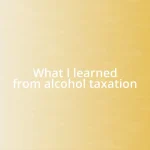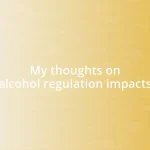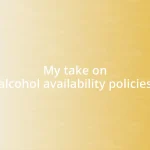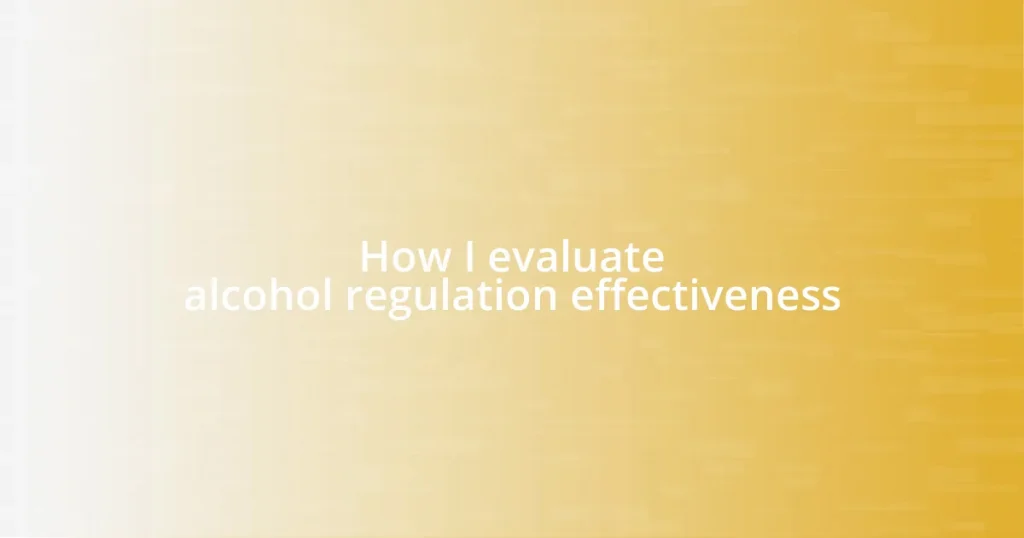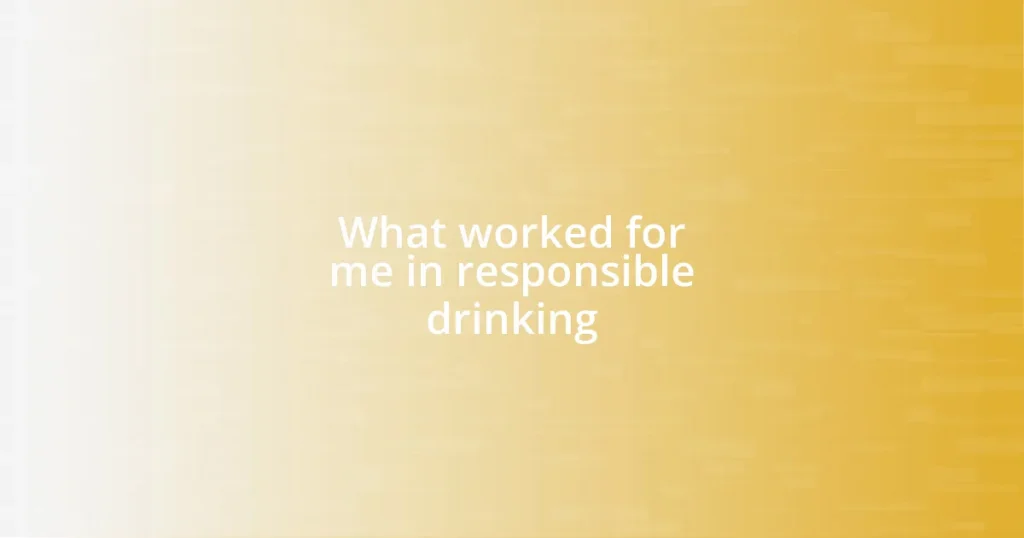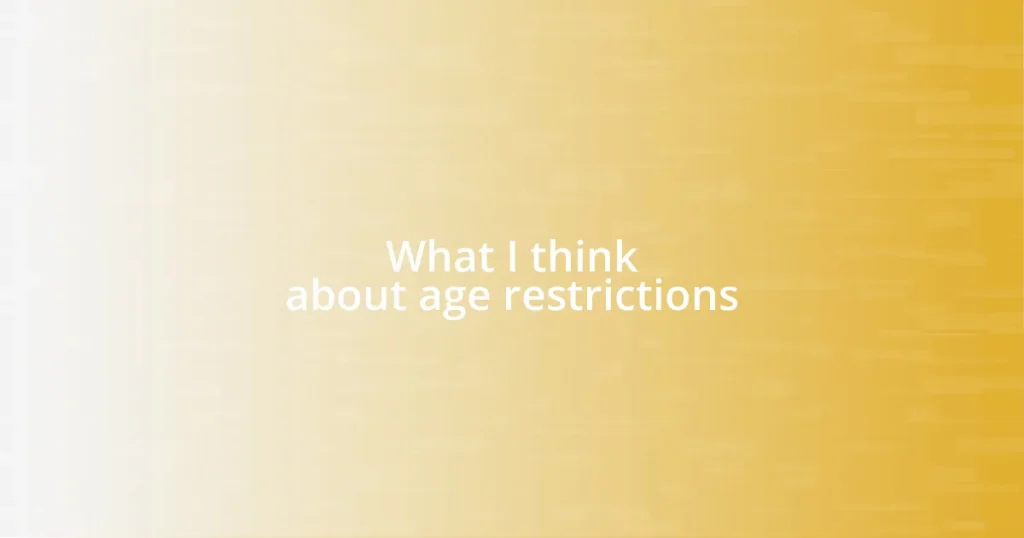Key takeaways:
- Alcohol regulation effectiveness is best assessed through both quantitative data (e.g., consumption rates, accident statistics) and qualitative insights (e.g., personal stories, community feedback).
- Establishing clear key performance indicators (KPIs) helps measure the real impact of alcohol regulations on community well-being.
- Community engagement and ongoing education are crucial for ensuring that regulations promote safety while addressing the unique needs of the community.
- Implementing best practices like setting measurable objectives and conducting periodic reviews enhances the evaluation process and allows for necessary adjustments over time.
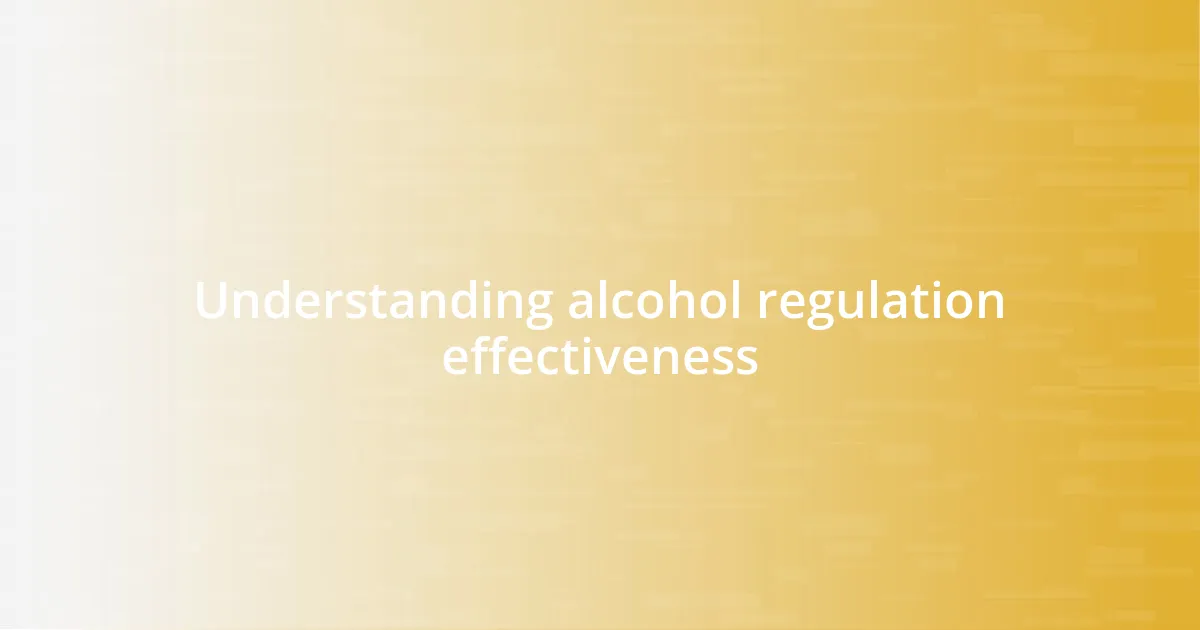
Understanding alcohol regulation effectiveness
Understanding alcohol regulation effectiveness is a multifaceted endeavor. I often find myself reflecting on how different regulations, like age restrictions or advertising limitations, can profoundly shape societal drinking habits. Have you ever noticed how some friends behave differently when they know the laws are strict?
When assessing effectiveness, I consider not just the numbers but also the human stories behind them. I remember a time when a local community held a series of workshops on responsible drinking; the impact was tangible. People shared their experiences openly, revealing how awareness and education transformed their relationships with alcohol.
It’s crucial to look at both statistical data and qualitative outcomes. For example, studies might show a drop in consumption rates, but what about the emotional and social factors? I think about how much these regulations affect families and friendships, sparking deeper conversations about health and responsibility. Isn’t it fascinating how regulations can create ripples of change beyond the surface?
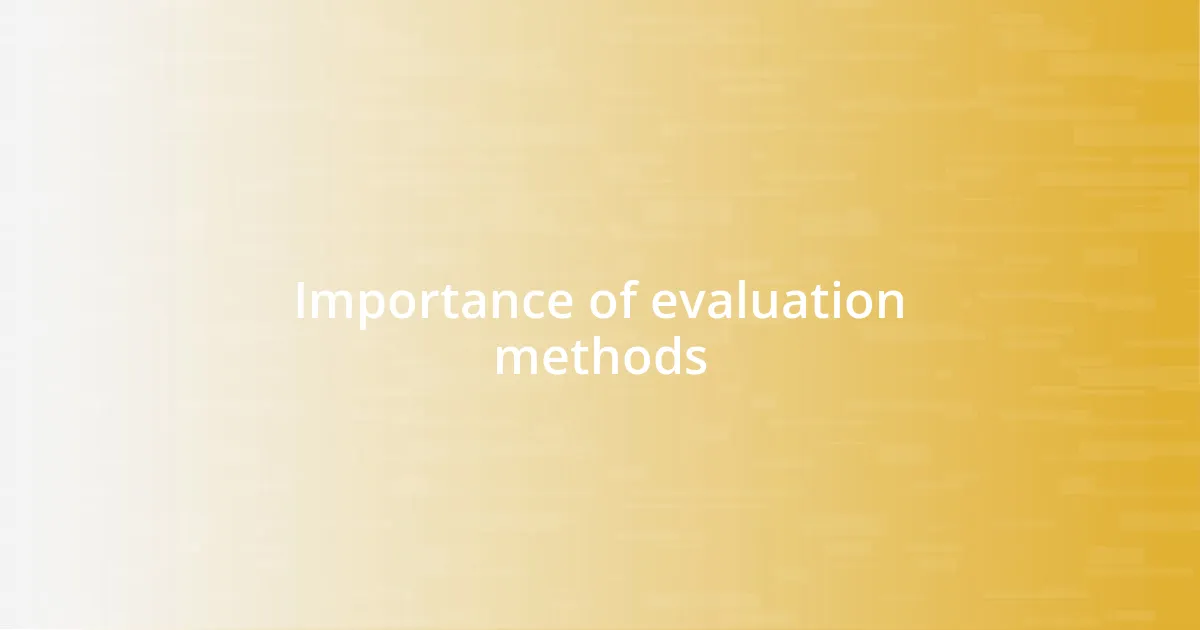
Importance of evaluation methods
Evaluation methods play a crucial role in understanding the effectiveness of alcohol regulations. They provide the structure needed to analyze both quantitative data, such as consumption rates, and qualitative insights, like personal experiences. I recall a discussion I had with a local community leader who emphasized that without these evaluation methods, we risk overlooking the real impact of regulations on people’s lives—the hidden stories that numbers don’t always tell.
When I evaluate these methods, I keep in mind several important factors:
- Clarity: Proper evaluation methods clarify what’s actually working and what isn’t.
- Accountability: They hold policymakers accountable for their decisions and the outcomes that follow.
- Adaptability: Effective evaluations inform adjustments to regulations, ensuring they evolve with societal changes.
- Empowerment: They empower communities by highlighting successful strategies to promote responsible drinking.
These elements resonate deeply with me because they shape how we envision the future of alcohol regulation. With thoughtful evaluations, we don’t just create rules; we cultivate a culture of awareness and responsibility that resonates far beyond legislation.
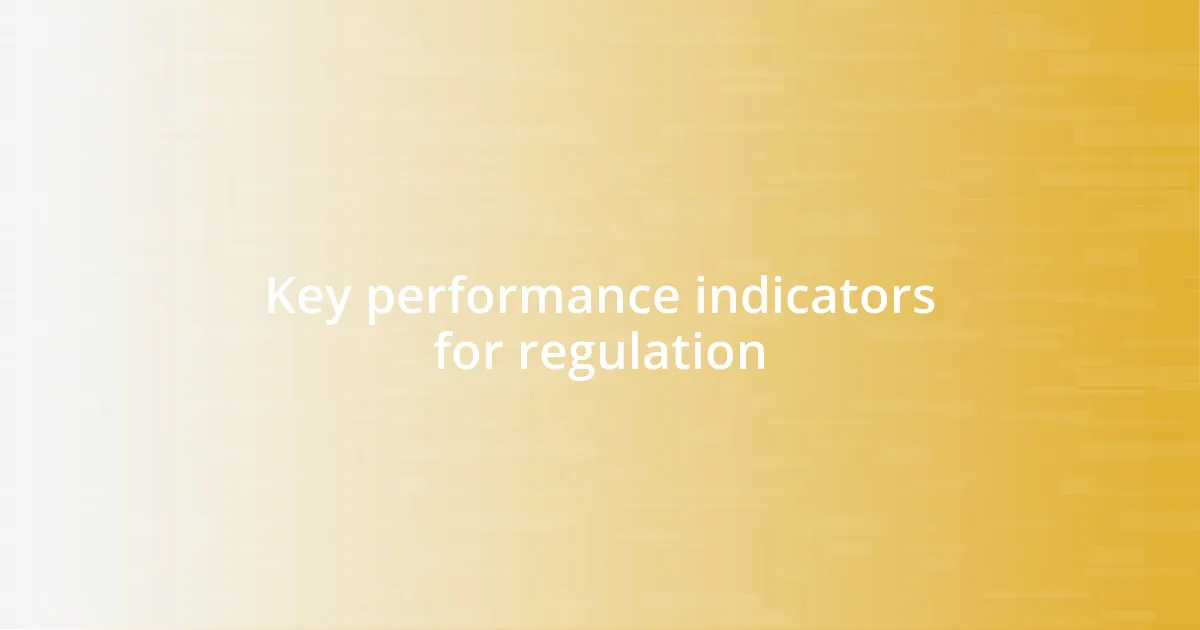
Key performance indicators for regulation
It’s essential to establish clear key performance indicators (KPIs) to measure the effectiveness of alcohol regulations. I often focus on metrics like the reduction in alcohol-related accidents, underage drinking rates, and public health statistics. These numbers not only provide a snapshot of the situation but also tell a story about community well-being—a reflection of how regulations impact day-to-day life.
From my perspective, comparing outcomes across different regions can be enlightening. For instance, I remember discussing with peers how a city with tighter advertising restrictions experienced a noticeable decline in youth drinking. This comparison not only highlights the direct impact of regulations but also inspires further discussions on best practices. For those involved, seeing the correlation between regulations and reduced alcohol-related harm reinforces the importance of staying informed and proactive.
To create a comprehensive evaluation framework, I advocate for balancing quantitative data with qualitative feedback from communities. I believe that having open conversations with local residents can reveal unexpected insights—not just about what’s working but also about the areas needing improvement. After all, regulations should evolve based on real-life experiences, ensuring they meet the unique needs of each community.
| Key Performance Indicators (KPIs) | Description |
|---|---|
| Reduction in Alcohol-Related Accidents | Measures the decrease in incidents linked to alcohol consumption. |
| Underage Drinking Rates | Tracks the prevalence of alcohol consumption among minors. |
| Public Health Statistics | Considers overall health outcomes associated with alcohol-related policies. |
| Community Feedback | Incorporates insights from residents regarding the impact of regulations. |
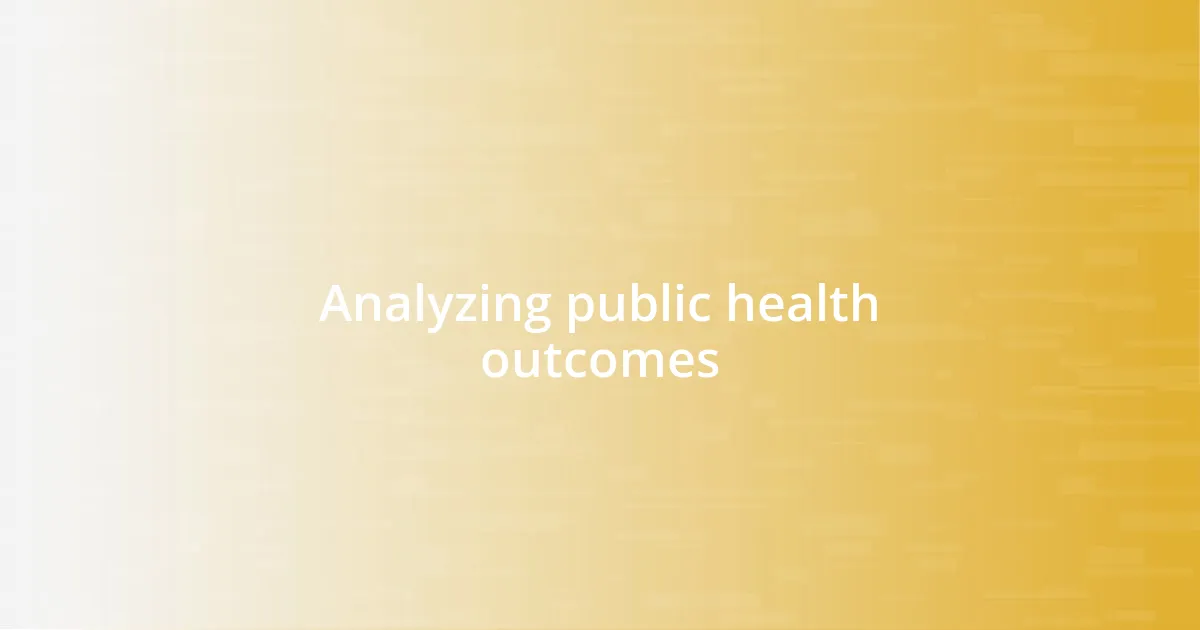
Analyzing public health outcomes
Analyzing public health outcomes requires looking beyond mere statistics. For example, during a community health fair I attended, I listened to people share personal stories about how local alcohol regulations had transformed their lives. One woman explained how a reduction in available alcohol sales hours allowed her son to engage in sports during critical formative years rather than being drawn to late-night parties. These narratives enrich our understanding of the true impact of regulations.
When I assess public health outcomes, I often reflect on how societal shifts play a role in shaping those results. I recall a moment after a town hall meeting where healthcare professionals passionately discussed the increase in mental health services following stricter alcohol regulations. This proactive approach showed me that effective regulation not only mitigates alcohol-related harm but also strengthens overall community health. It poses an interesting question: how can we ensure that every regulation carries the same potential for positive change?
To truly grasp the effectiveness of alcohol regulations, integrating anecdotal evidence into statistical frameworks is vital. I remember gathering feedback during a community survey and finding that residents often felt more secure and supported in their neighborhoods with effective regulations in place. These insights can sometimes reveal hidden victories or unanticipated setbacks, prompting a deeper exploration of what works and what needs rethinking. Engaging with these stories helps paint a fuller picture and urges us to refine our strategies continuously.
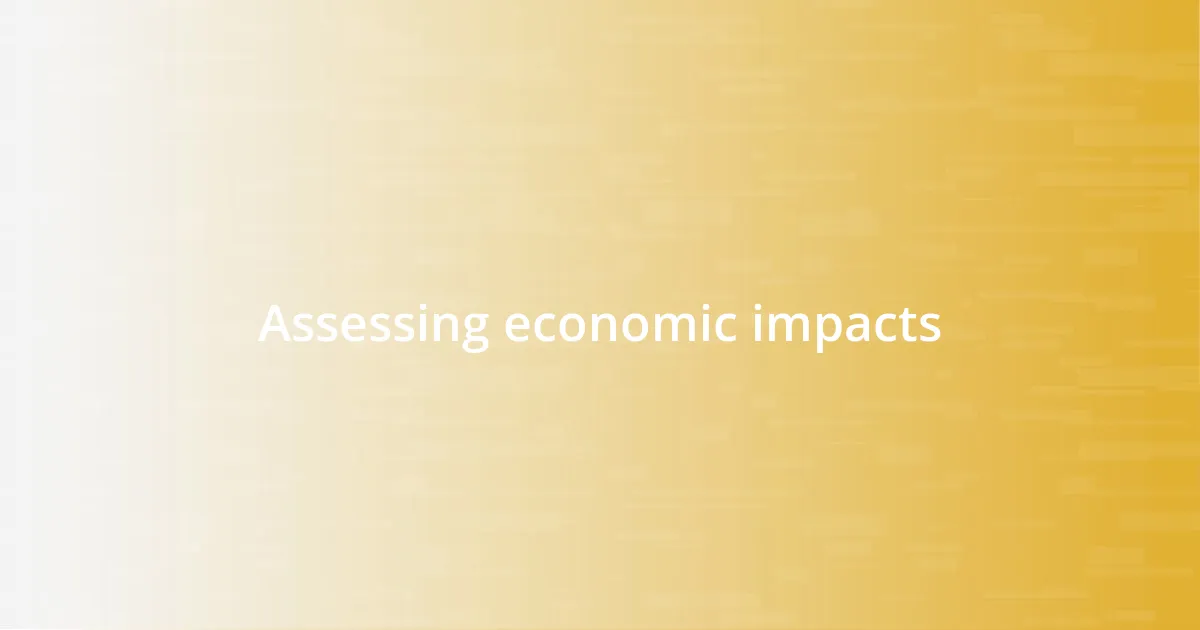
Assessing economic impacts
When assessing the economic impacts of alcohol regulation, I often find myself looking at both direct and indirect costs associated with alcohol consumption. I remember a study I reviewed that illustrated a substantial decrease in healthcare costs for a community after implementing stricter regulations. Isn’t it fascinating how a policy shift can have such far-reaching effects? These savings highlight the importance of examining not just immediate economic outcomes, but also the longer-term financial benefits for local governments and taxpayers.
I’ve also noticed the cultural shift in attitudes towards alcohol that can result from effective regulation. For example, in a local tavern I frequent, I struck up a conversation with the owner who shared how business thrived after the city established a comprehensive alcohol licensing program. The reduced competition in a responsible drinking environment encouraged patrons to enjoy their time without the overwhelming presence of drink promotions. This transformation not only enhanced her bottom line but fostered a safer community atmosphere.
Additionally, exploring the employment landscape can offer valuable insights into the economic ramifications of regulation. I recall attending a local economic development meeting where stakeholders discussed the introduction of shift work in bars and restaurants due to limited operating hours. While some worried about job reductions, others pointed to new opportunities for part-time work, especially for students. How do we balance potential job losses with the enhanced community health benefits? This dual perspective underscores that the economic impacts of regulation are multi-faceted, requiring thoughtful evaluation and discussion.
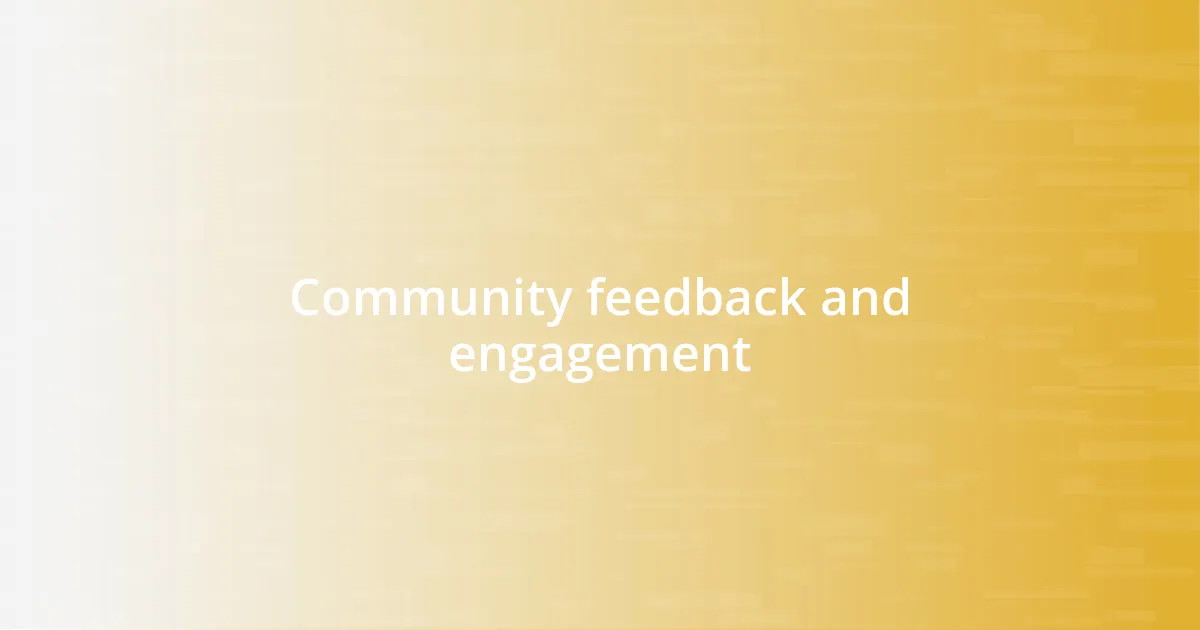
Community feedback and engagement
Engaging with community feedback is essential when evaluating the effectiveness of alcohol regulations. I remember attending a neighborhood meeting where residents shared their experiences with local policies. One gentleman described how reduced alcohol availability made it easier for his daughter to connect with peers in healthier ways, rather than succumbing to pressure at parties. These stories highlight not only personal triumphs but also the broader impact on community ties.
Feedback can also expose hidden challenges that regulations might create. During a discussion at a community center, I heard from local bartenders who expressed concerns that strict alcohol regulations sometimes pushed patrons toward unregulated venues. This candid feedback made me realize the importance of creating inclusive spaces that foster safety while also considering the needs of local businesses. Isn’t it intriguing how regulations designed to protect can inadvertently shift behaviors elsewhere?
Listening to community members provides invaluable insight into the success of alcohol regulations. After conducting an informal poll among my neighbors, I discovered that most felt safer when regulations were enforced, yet a handful also expressed a desire for more educational resources on responsible drinking. This highlights a key takeaway: regulations alone aren’t enough. They must be paired with ongoing community engagement and education to ensure lasting positive change. Isn’t that what we ultimately strive for—a balance that promotes safety while supporting community growth?
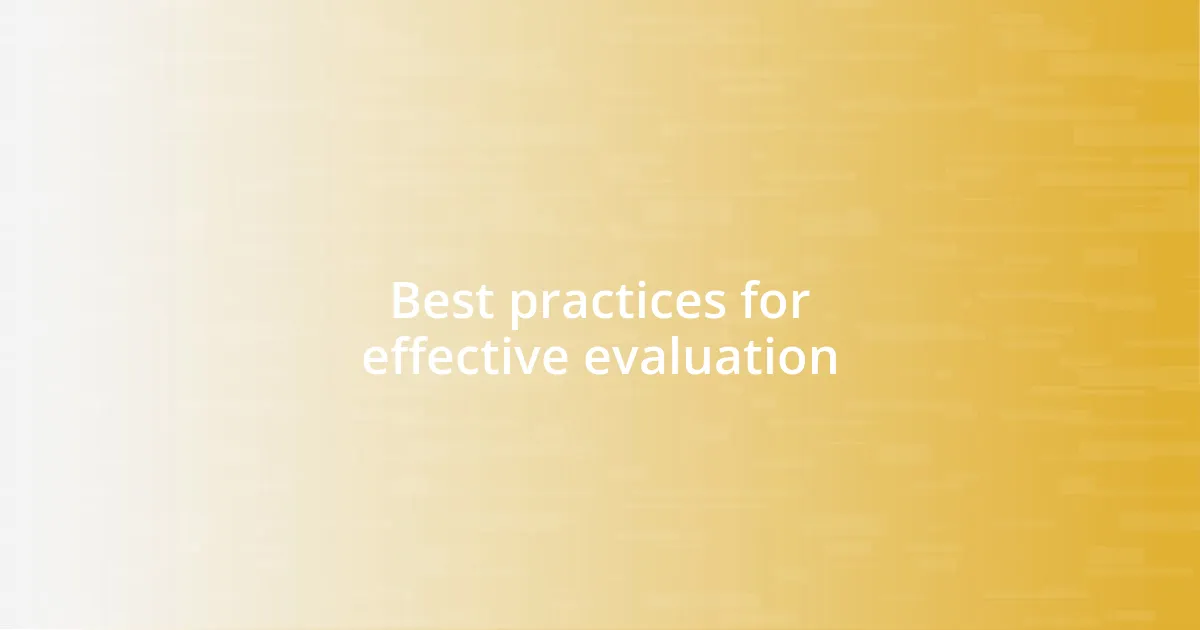
Best practices for effective evaluation
To effectively evaluate alcohol regulations, I find it essential to establish clear, measurable objectives right from the start. For example, during a project I was involved in, we set specific targets around reducing underage drinking. It was interesting to see how focused goals led to more structured evaluations and helped us track our progress over time. How do we ensure that our evaluation efforts are not just an afterthought but a central part of our strategy?
Another best practice involves gathering diverse data sources to create a comprehensive picture of the regulations’ impact. In my experience, combining quantitative data, like alcohol-related incidents from local law enforcement, with qualitative insights, such as personal stories from residents, often reveals surprising correlations. I recall analyzing police reports alongside community narratives after a local ordinance was enacted, and it was enlightening to see how the two complemented each other. Isn’t it amazing how numbers and stories together can illuminate the full scope of a regulation’s effectiveness?
Implementing periodic reviews is also crucial in my evaluation process. For instance, after a policy change in my area, we conducted regular check-ins to assess the community’s evolving perceptions. I remember one particular gathering where residents voiced their thoughts, which led to actionable insights that refined our approach. This iterative process fosters a sense of ownership among community members while ensuring that our evaluations remain relevant and responsive to real-world needs. How often do we take the time to reflect and adjust our strategies based on direct community input?



